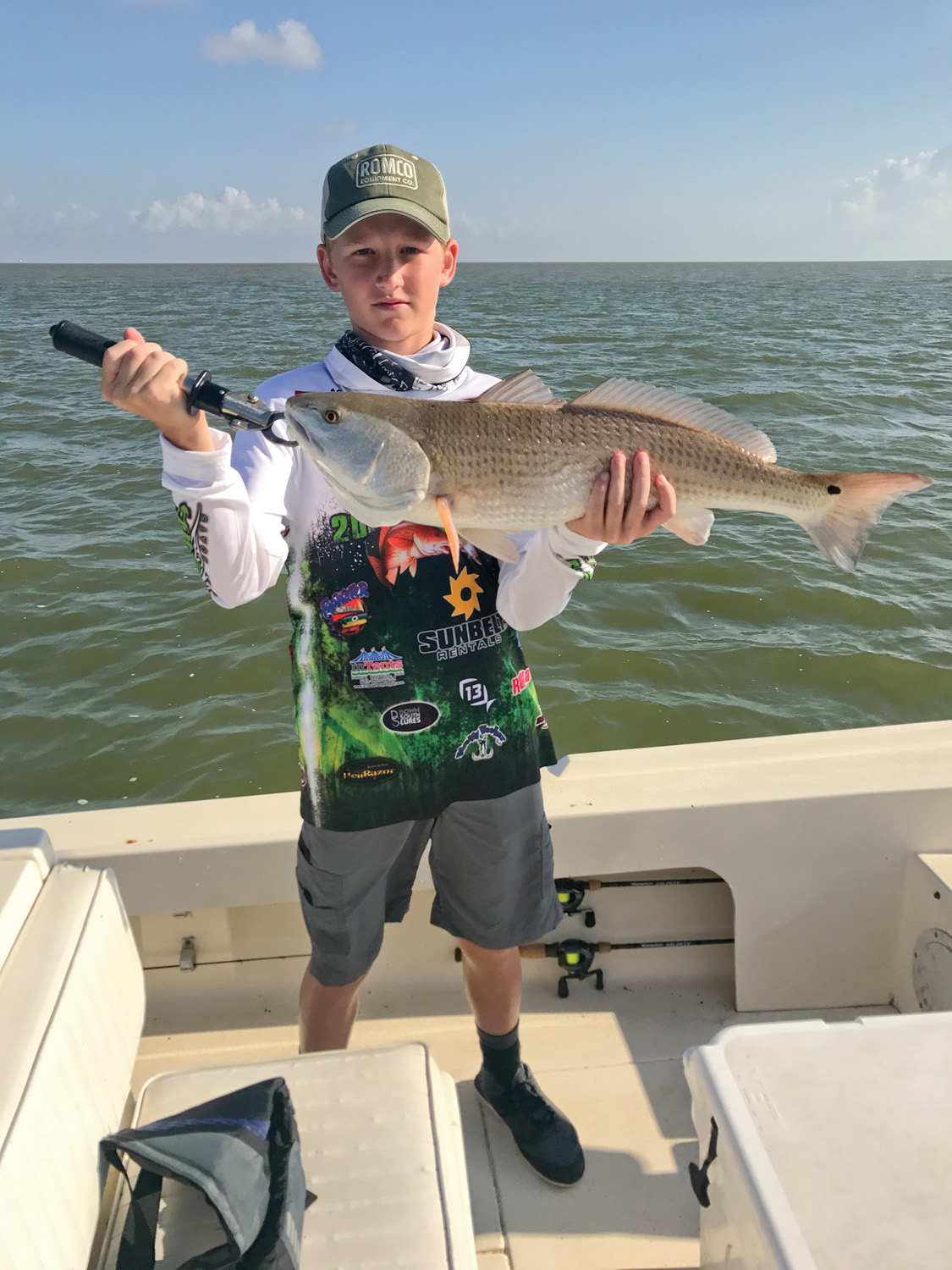The Buzz: August 2017

August can be miserably hot but the fishing can be some of the best you can absolutely get in the Galveston Bay System. August is also a generally calm month. The majority of our trout and redfish are holding on deep mid-bay structure and, with light wind, we can consistently access the areas they are using.
Much the opposite of spring and early-summer, when wind is almost always a limiting factor, we can fish nearly every day wherever we want to. Going straight to the fish rather than fishing where the weather dictates is a major plus in August.
Allowing yourself multiple days on the water is huge for seeing exactly when the fish want to bite. If you go out in August and get on a midday bite or an early morning bite, chances are that you can repeat those same conditions the next day and have almost equal success.
Tide movement is everything in saltwater fishing during August’s excruciating heat. We are typically working in eight- to twelve-foot depths and gauging current strength is critical to success. They aren’t going to eat whenever the flow is too weak and they will be reluctant to feed when it’s too strong. Too much tide current might sound silly but it can kill the bite in deeper water.
Imagine that you are running on a treadmill at full speed and someone offers you a big buffet meal. You would probably turn them down saying, “Hold up and let me slow down a little bit. Maybe then I’ll eat.”
Those fish don’t want to fight the current any more than you want to try to eat while pounding that treadmill. That’s the way I see it, anyway. This theory is reinforced time and again when we experience some of our best bites when the current begins to slacken or approaches a tide change.
The Galveston Bay Complex is one of the deepest on average and has one of the busiest shipping channels running right through it. Using the ship channel on weak tide flows, too weak for them to feed in other areas off the channel, will also increase your chances of keeping up with the bite. When the tankers pass by, they create an artificial current and fish react to it the same as they do the tide. That’s another reason that fishing close to the channel can up your odds.
Now, it’s no secret that the fish are often harder to catch when temperatures soar. But the other side of that coin is that when they do decide to eat, they do so very aggressively. Fact of the matter is that their metabolism is in high gear during summer and they have to eat to stay alive. Feeding more often and for longer periods creates more slicks, which makes finding them a lot easier. Keep your eyes open!
West Galveston Bay
East Galveston Bay
East Bay has been somewhat hit or miss with daily crowds hitting it so hard the last couple months, but there are still good catches coming off mid-bay reefs. Soft plastics, MirrOlure Lil’ Johns or Provokers on 1/4oz jigs are great choices. Redfish have been spotty in open water and also up in the marsh. Fishing should improve in East Bay with each new school of fish that comes in through the jetties.
Trinity Bay
Trinity Bay has been good when the wind has been light. Now that we’re approaching the doldrums of summer we should be able to get a good sampling of what we’ve actually got out there. August is always good around the gas wells in the middle of the bay. Each well has its own shell pad so use your sonar to find the best corners and humps. I typically use 1/4 or 3/8 oz jigheads, depending on the current, with MirrOlure Marsh Minnow paddletails or the Soft Shad. Redfish will predominately school in open water but never rule out shell-mud shoreline structure or bayou drains.
Follow our catches daily on Instagram @harpsguideservice.
